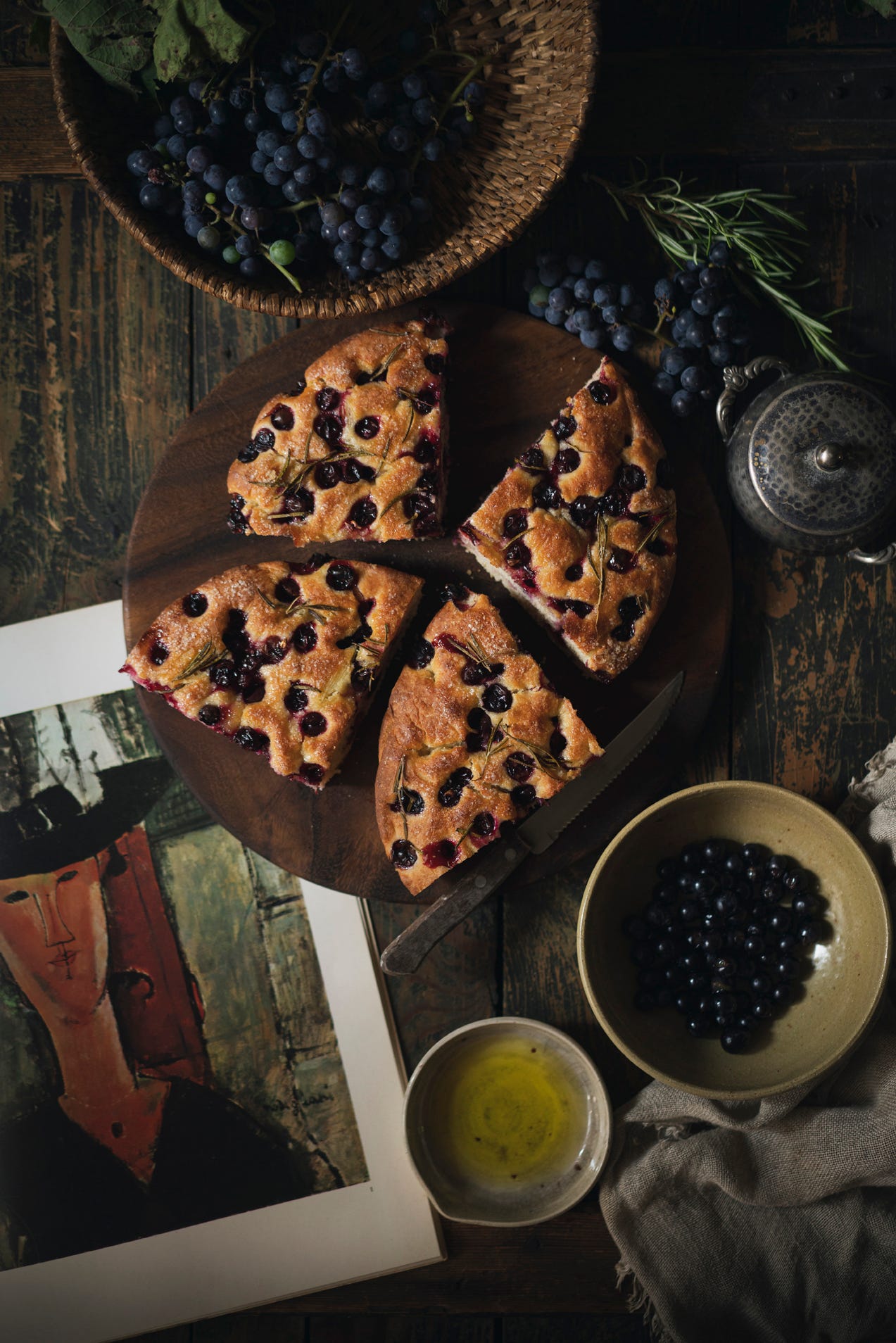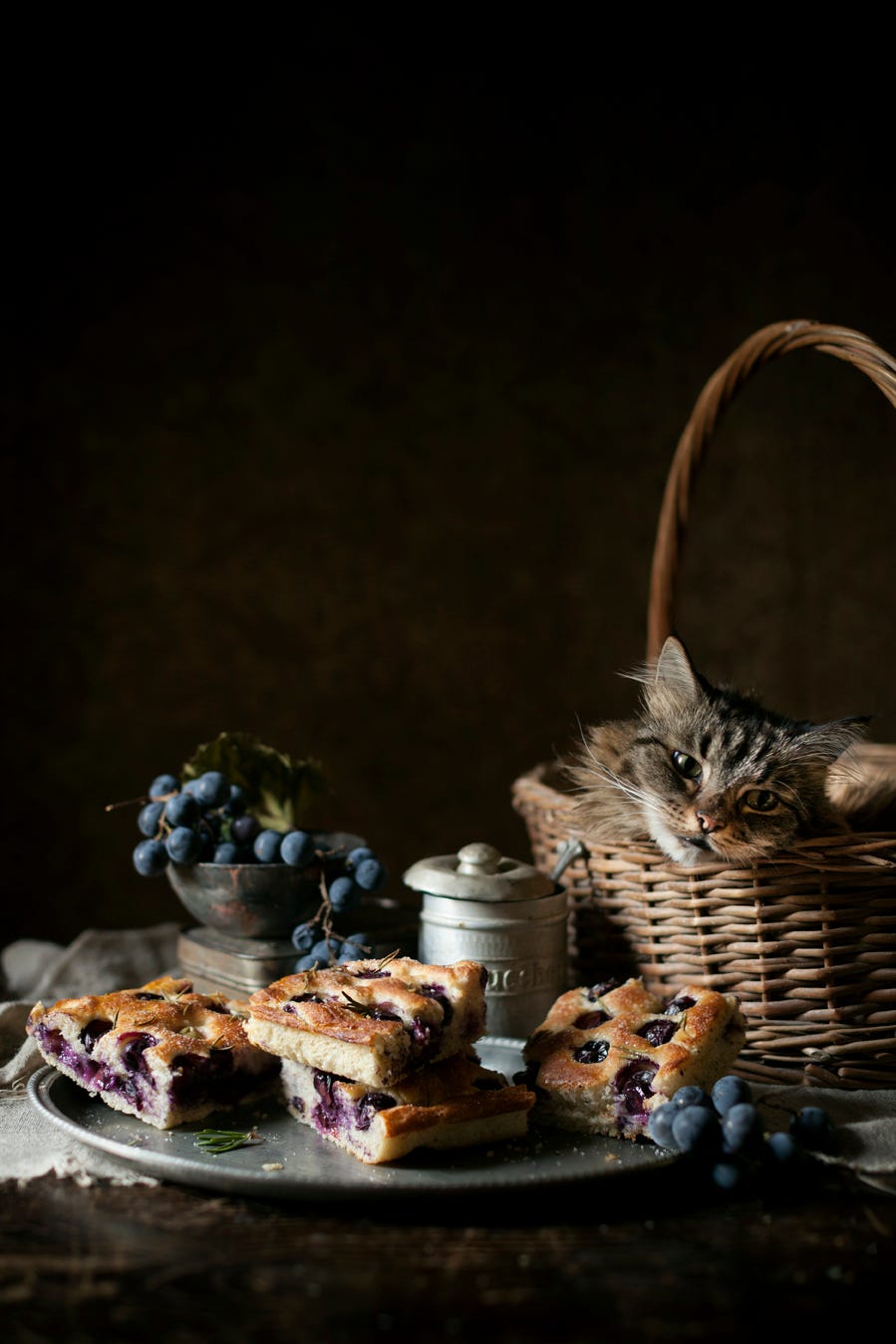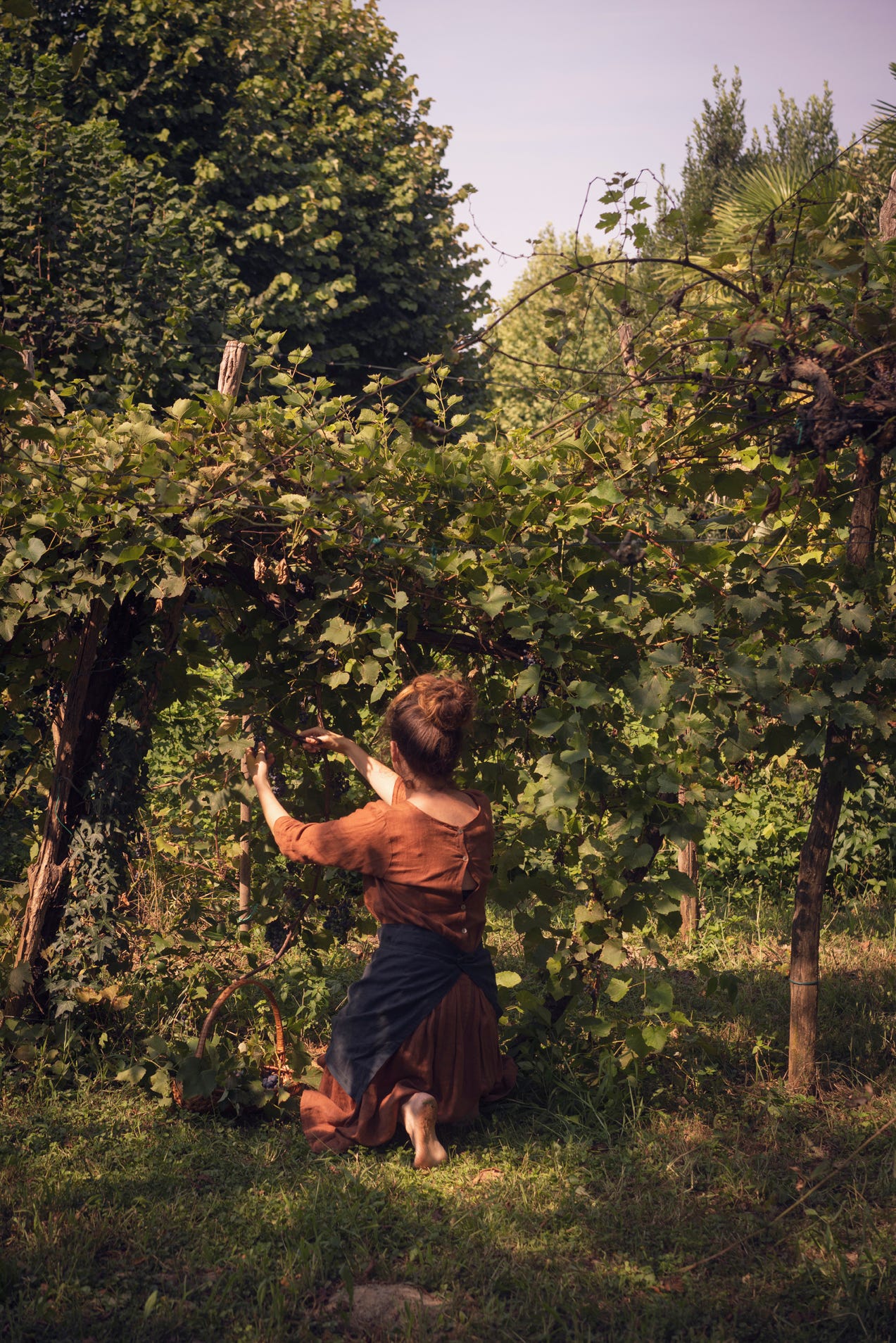Stories from the Archive: Amedeo Modigliani's Grapes
A Nostalgic Glimpse of the Old Academy of Fine Arts in Venice and a Recipe with Modigliani’s Grapes
Prologue
I don't think I'm alone in noticing that we live in an extremely fast-paced era, where everything is quickly consumed and replaced with something new, better, or more efficient. However, I don’t believe that trying to slow down and adopt a slower, more mindful lifestyle, focusing on quality over quantity, can be considered countercultural. Rather, it’s about seeking greater meaning and quality in life.
This is one of the reasons I’ve decided to return to writing and share articles on Substack — articles that take time to read — hoping to reach readers who appreciate slowness, patience, and a desire for depth. Over the years, I’ve written a lot but shared little, adapting most of my ideas to Instagram in the form of short, condensed content. While my blog offered space for more extensive reflections, today these platforms seem to penalize those who don’t conform to a consumerist, fast-paced model.
I’ve noticed that my way of reading and staying informed has changed, with the risk that my finger scrolls across the screen faster than my mind can process, and I don’t like that.
It’s also unsettling to see how something shared online is immediately considered "old" or "already posted," thus diminishing its relevance over time. This approach devalues content and ideas, reducing them to a kind of immediate obsolescence.
Yet every piece of content can continue to offer value and meaning and deserves to be appreciated and thoughtfully considered over time.
For this reason, I want to bring back to these screens fragments of texts, images, and even recipes that I’ve created over the years, and that I still find valid and hope might be interesting to explore and perhaps enjoy. My hope is to reach a new audience, maybe even different from the one that usually follows me on social media.
This tale is something I wrote some time ago, in terrible English that I hope I’ve worked on and improved a bit. You’ll forgive the mistakes, remembering that I’m a native Italian speaker — actually, Venetian (which is another language altogether!).
I wrote it during this same time of year, when the oppressive summer heat is about to end, and the grapes are ready to be harvested.
I’m not talking about just any grapes, but rather a special kind from my garden, which, like a magical portal, takes me back to stories from the last century, to artists and places of art, and a Venice that no longer exists — one I only experienced myself through the stories passed down by those who were truly there. It was a time when perhaps everything was simpler, slower, and more genuine, like the humble yet incredibly delicious recipes from that era.
The recipe that follows is a classic of the Tuscan farming tradition: a focaccia made with black Concord grapes — Modigliani’s grapes — and yes, you’ll need to keep reading to find out more!
In the 1750s, the Venetian Senate granted a room — a space — in the location where the Magistrate of Flours was housed to young people. Under the guidance of Masters, they were allowed to familiarize themselves with the art of drawing. The Church and School of Santa Maria della Carità, which were adjacent, would later become the Academy of Fine Arts in Venice.
Many illustrious names passed through the great gate, now closed but still visible from the eponymous Campo. Among them was a young Amedeo Modigliani in the year 1903.
At the entrance, visitors were welcomed by the sight of a noble courtyard, with a beautifully elevated puteal and a herringbone-patterned red brick floor. Just to the left, a covered area displayed a large wrought iron chandelier, and four steps led to five expansive rooms that served as workshops. Above these, the upper floor — created by splitting the church — was used for exhibitions of the students' works.
From the first courtyard, surrounded by buildings with glass doors and windows, moving forward led to a dark sottoportico. In the dim light, there were plaster casts of Greek bas-reliefs of exceptional quality. Then, as if by contrast, a bright light reappeared upon entering a second, larger courtyard, almost like an entire Venetian Campo paved with Istrian stone.
At the far end stood a majestic three-tiered colonnade, with brick columns alternating with the white stone sculptures by Maestro Canova — this was one side of the 16th-century convent.
In the middle of the courtyard, a small, spontaneous garden with tall oleanders stood next to a magnificent rectangular marble basin, used to clean the work tools. Around the wide perimeter, small islands of bricks served as flowerbeds for other plants. One of the most remarkable sights was a flourishing vine, which had grown into a sturdy pergola heavy with ripe grapes, impossible for the young students to overlook.
Often, it was beneath the pergola where they sought shade and exchanged their artistic doubts. Among them was a young Modigliani, and the story goes that he was so fond of the grapes that, over the decades, the vine eventually took on his name, becoming known as "Modigliani's grape."
I was still a child when I passed through the sacred doors of the kingdom of fine arts, hand in hand with my mom, who stopped at the porter's lodge to ask the keeper of keys about Professor Zarotti.
The professor, a younger version of my father, came to the entrance after a few minutes, wearing one of those corduroy suits he had bought in Paris when he was just twenty.
I remember his paint-stained hands and the smell of turpentine on his jacket. I don’t remember much more, but I have never forgotten that courtyard with Modigliani’s vine beneath which we walked.
Many years later, the historic headquarters of the Academy of Fine Arts was closed in preparation for a change of use — a renewal still not fully resolved.
Emptied and robbed of everything, including its ancient charm, enriched by the stories passed down through the generations of some of the world's most famous artists, the Academy saw its doors close for a long time, and Modigliani’s vine withered away until it finally disappeared.
Decades later, stories of large boats loaded with old trestles and stools stained with layers and layers of oil paint reached my ears, along with those of a no longer young Professor Zarotti, who saved a root of Modigliani's vine by placing it in the pocket of his jacket.
True stories can be manipulated, as often happens in Venetian tradition, which tends to lengthen them — much like the tail of the lion of San Marco (just look at it, it's out of all proportion!).
However, they can also be passed down faithfully and not dispersed when they are handed from person to person, or better yet, from ear to ear, to fortunate witnesses. And so it was: this story, along with a few branches of 'Modigliani's vine,' was gathered and now thrives in my garden.
Some time ago, I created a still life featuring Modigliani’s grapes. The fine art print is available here on my website. It is a limited edition print, produced in museum-quality on beautiful certified paper. The print comes signed and with a certificate of authenticity.
Focaccia with Concord Grapes and Rosemary
(For a 20x20 cm baking pan with slightly high edges)
200 g all-purpose flour
150 g Manitoba flour
3 tablespoons olive oil + extra for greasing the pan
20 g dried sourdough starter
200 ml lukewarm water
2 tablespoons granulated sugar
2 clusters of Concord grapes
1 sprig of rosemary
Sift the two flours into a bowl along with the dried sourdough starter. Add the olive oil and, gradually, the lukewarm water, mixing with your hands until you get a lumpy mixture. Transfer the mixture to a work surface and knead energetically for about 5 minutes until a smooth, compact ball forms. Place the ball in a lightly oiled bowl, cover it with a cloth, and let it rise in a turned-off oven for about 1.5 hours.
After this time, remove the dough and divide it into two equal parts. Knead each part separately, folding it gently over itself 4-5 times. Place them in two separate, lightly oiled bowls, cover them with a cloth, and let them rise in the turned-off oven for another 1.5 hours. After this time, the two doughs should have tripled in volume. Take one of the doughs and turn it onto the already oiled baking pan. Use your fingertips to spread the dough to cover the entire surface. Scatter one cluster of grapes over the dough, distributing the grapes evenly, and sprinkle with 1 tablespoon of granulated sugar. Gently stretch the second piece of dough and place it on top of the first, covering the entire surface. Seal the edges well and scatter the grapes from the second cluster on top. Let it rise in the turned-off oven for another 45 minutes.
Remove the pan, preheat the oven to 200°C (392°F), sprinkle the surface of the focaccia with another tablespoon of sugar, and bake. Cook for 20-25 minutes at 200°C until the surface turns golden brown.










This is such a lovely story, Zaira! How magical that you grow those very grapes now in your own garden, and keep the tale of their origins for your children. I am looking forward very much to trying your grape focaccia recipe. x